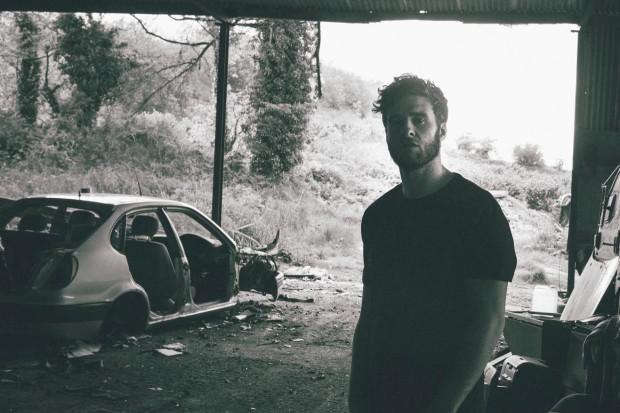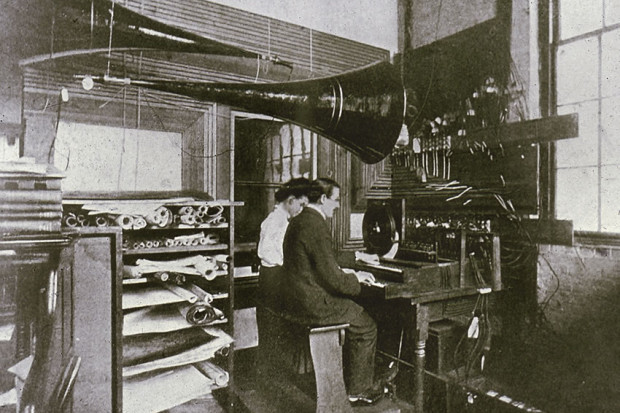
Eimear Noone
From Bleeps and Bloops to the Epic Theme: The Rise of Video Game Music
Throughout music history, composers have always exercised immense creativity in modes of expression outside of absolute music. These other vehicles for their art, however, have often found their way into the public consciousness through functional and collaborative multi-media art forms.
From the king needing music for a hunt – strap a couple of travel-size timpani onto the side of a horse and off you go – to ballet, opera and intermezzi for the play-house, and that great employer of composers past: the church.
Collaborative media perhaps play an even bigger place in the life of the twenty-first century composer, it now having become de rigueur for all technological forms of entertainment to have their own score. Film and video games are two areas that I have specialized in, and which provide a combination of function-based limitations and yet endless compositional possibilities.
I fondly remember being a seventeen-year-old student on the Ennis Composition Summer School and being completely blown-away by the words of renowned, and much-loved, Finnish composer Kalevi Aho. Aho warned against contemporary composers surrounding themselves with ‘too many musical platitudes’, and thus boxing themselves in with self-imposed limitations – tonality, harmony, melody, oh for shame!
My interpretation of his words was to seek out areas of expression where I could employ all of the platitudes! From modal counterpoint to serialism, extended jazz-harmonies to heavy-metal percussion, I’ve taken great joy in exploring them all in the duel worlds of film and video game scoring.
The two, however, are not the same.
The big theme
Video game music is emerging as a genre unto itself, perhaps in the same way that film music did in the 1980s. As film directors shy away from ‘the big theme’ in favour of mood-based soundscapes, video game directors are doing exactly the opposite. Game developers want their project to have an identifiable thematic identity and to make their games a memorable emotionally engaging experience. The word ‘epic’ has definitely become over-used in this regard, but it is usually appropriate.
Hang on a second, what is this video game music you speak of? Some 8-bit, unintentionally pointillistic something-or-other, surely? Pong, anyone?
Not to denigrate video game music’s 8-bit history (if you can make a theme work in 8-bit, it’s a bloody good theme), but before game engines and computers had the fire-power they do today, the score for a game was usually created by someone on the game’s programming team. Yes, each pitch had to be painstakingly programmed… compositionally inspiring indeed.
Today, the composer has the visual stimulus of vast worlds as complex, deep and awe-inspiring as a great Dali landscape. Take a look at Blizzard Entertainment’s Diablo III or World of Warcraft. Scoring those incredible worlds requires the equally awe-inspiring and emotionally wrenching powers of that great historic musical machine, the orchestra. Add to this the voices of humanity in the shape of philharmonic chorus, and, to help create the fantastical cultures of otherworlds, include every ethnic instrument and musical language on the planet, in limitless combination. Aaah, the platitudes…
The orchestra in the game console
It’s an interesting time for music and endless amounts have been written about the challenges of the digital age, but consider this: people are listening to more recorded orchestral music than at any time in music history, through their gaming consoles! And they’re listening to it for longer periods and more often – plus, the demographics range from young children all the way up.
Some may argue that this music is written for the purpose of being in the background. However, in-game music has great freedom for expression, which is giving rise to ever-more complex compositions. Furthermore, with the opening up of technological possibilities, we now have a new, modern vehicle for those of more classical leanings – artists, writers and composers – to express themselves, whilst having a support structure that supersedes the kings and churches in the feeding of artists’ families!
More importantly, kids are hearing the sonority of the orchestra as the soundtrack to their lives and not that of their grandparents. Herein lies an amazing opportunity for orchestras to introduce their classical legacy to a young audience already primed to love their ‘sound’.
The only obstacle I can see to such a positive development is musical snobbery.
The rise of game music
Video game music has a vast and impassioned following, and, although there’s a loving place in nostalgia for what game music icon, composer Tommy Tallarico, calls ‘bleeps and bloops’, the music is becoming ever more complex. Video games are allowing us to revive the Renaissance obsession with emotional ‘affect’ (the employment of harmonic and melodic technique to bring forth emotion in the listener) when contemporary art music had condemned such things as platitudinous (and I’m someone who loves a good 12-tone-row).
It is still a musical wild west in the world of video game music, but the first vestiges of civilization have appeared on the horizon (composer Christopher Tin having won the first Grammy for a song from a video game for his bespoke score to Civilization IV).
But will this music stand up on its own and last outside of its original function as accompaniment to another medium?
Well, aren’t we still performing Handel’s Fireworks suite, hundreds of years after King George II’s big show has fizzled out?
Eímear Noone will be conducting some of her music from World of Warcraft for Video Games Live at the Convention Centre, Dublin, on 1 May as part of the iDIGmusicFest celebrations (29 April – 1 May). For full details, visit www.idigmusicfest.com
–
Originally from Galway, Eimear Noone’s work as both a composer and a conductor have been featured in the multi-award winning and BAFTA-nominated scores for World of Warcraft, Diablo III, Starcraft II, Hearthstone, Overwatch, and many more. Her conducting for Nintendo’s 25th Anniversary CD has earned millions of views on YouTube, and currently she can be seen touring with Tommy Tallarico’s orchestral show, Video Games Live.
Published on 26 April 2016














